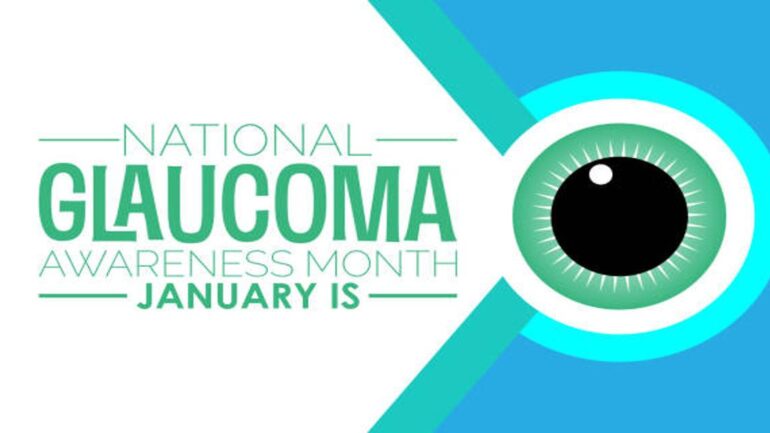National Glaucoma Awareness Month 2025: What Healthcare Leaders Should Be Watching

- Posted by Greg Wahlstrom, MBA, HCM
- Posted in Health Observance Calendar
How Hospital Strategy, Workforce Health, and Equity Begin with Better Vision Care
Published: January 3, 2025
Each January, Glaucoma Awareness Month highlights the importance of early detection and treatment of glaucoma, a leading cause of vision loss and blindness in the United States. Often called the “silent thief of sight,” glaucoma has no early symptoms, and as many as half of people with the disease don’t know they have it. For healthcare executives, this observance underscores the need to integrate vision health into broader strategies for workforce wellness, health equity, and digital innovation.
From a workforce health perspective, undiagnosed glaucoma can lead to significant vision impairment, affecting employee productivity and safety. Regular comprehensive eye exams are crucial for early detection. Organizations like the National Eye Institute provide resources to help individuals access affordable eye care services. Incorporating vision screenings into employee wellness programs can aid in early diagnosis and treatment, preserving vision and maintaining a healthy workforce.
Health equity is another critical aspect. Certain populations, including African Americans over age 40, Hispanics/Latinos, and individuals with a family history of glaucoma, are at higher risk. Addressing disparities in access to eye care services is essential. Initiatives by organizations such as Prevent Blindness offer free educational resources and support to raise awareness and promote early detection in underserved communities.
Digital innovation plays a vital role in enhancing glaucoma care. Telemedicine platforms and remote monitoring tools enable patients to receive timely consultations and follow-ups, especially in areas with limited access to eye care specialists. Embracing these technologies can improve patient outcomes and streamline care delivery. Healthcare leaders should explore partnerships with digital health companies to expand the reach of glaucoma screening and management services.
Strategic planning during Glaucoma Awareness Month provides an opportunity to align organizational goals with public health priorities. Integrating vision health into chronic disease management programs can lead to comprehensive care models that address multiple health concerns simultaneously. By prioritizing eye health, healthcare systems can improve overall patient well-being and reduce the burden of preventable vision loss.
Financial considerations are also paramount. The cost of untreated glaucoma includes not only direct medical expenses but also indirect costs such as lost productivity and increased caregiving needs. Investing in preventive measures and early treatment can yield significant long-term savings. Healthcare executives should evaluate the return on investment of incorporating glaucoma screening into existing preventive care initiatives.
Gender disparities in glaucoma prevalence and outcomes necessitate targeted interventions. Women are more likely to develop certain types of glaucoma, and hormonal factors may influence disease progression. Tailoring education and screening programs to address these differences can enhance the effectiveness of prevention efforts. Collaborations with women’s health organizations can facilitate outreach and engagement.
Reputation and transparency are increasingly important in healthcare. Demonstrating a commitment to comprehensive eye care through public awareness campaigns and community partnerships can enhance an organization’s image and build trust. Sharing success stories and patient testimonials during Glaucoma Awareness Month can showcase the impact of proactive vision health initiatives.
Workforce education is a key component of effective glaucoma management. Providing ongoing training for clinical staff on the latest screening techniques and treatment protocols ensures high-quality care. Encouraging interdisciplinary collaboration among ophthalmologists, primary care providers, and other healthcare professionals fosters a cohesive approach to patient management.
Finally, leaders must recognize that glaucoma awareness should extend beyond January. Sustained efforts to promote regular eye exams, patient education, and access to care are necessary to combat this silent disease. By embedding vision health into the fabric of healthcare delivery, executives can drive meaningful change and protect the sight of countless individuals.
Internal Links
- Wellness as a Strategic Imperative
- The Healthcare Workforce Crisis: Executive Solutions That Actually Work
External Links
- National Eye Institute – Glaucoma Awareness Month
- Prevent Blindness – Glaucoma Awareness Month 2025
- American Academy of Ophthalmology – Eye Health Observances
Discover More on Nurse Wellness Leadership
If your organization is rethinking how to support clinicians with chronic condition risks, stress reduction, and preventive care access, explore our strategic analysis on nurse wellness in 2025. It outlines the leadership moves that truly make a difference.



